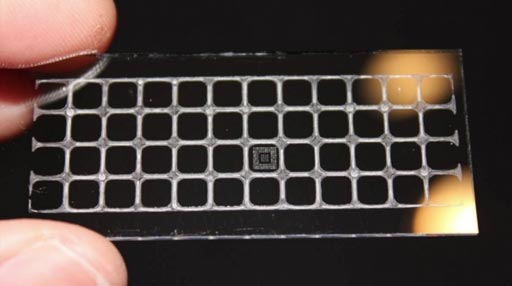Smartphone-Based ELISA Developed for Blood Antigens
By LabMedica International staff writers
Posted on 14 Aug 2017
A novel high speed, lab-on-a-chip ELISA test for antigens in blood samples depends on a unique nonstick polymer coating that eliminates the need for multiple incubation and washing steps.Posted on 14 Aug 2017
Investigators at Duke University (Durham, NC, USA) used an ink-jet printer to spray an array of antibodies onto glass slides treated with a unique nonstick polymer brush coating. The coating functioned like Teflon to prevent non-target proteins from attaching to the surface of the slide and causing high levels of background "noise".

Image: A prototype of the D4 assay (Photo courtesy of Daniel Joh, Duke University).
The investigators "D4 assay" utilized a matched pair of antibodies to detect and capture a target protein in a blood sample. The fixed array on the slide comprised immobilized capture antibodies and soluble detection antibodies, which were labeled with a fluorescent marker to allow quantitation of the antigen (if present). Placing a drop of blood on the slide caused the detection antibodies to dissolve, separate from the array, and bind to target proteins in the sample. The fluorescing antibody-antigen pairs then attached to the capture antibodies on the slide. A buffer solution was used to remove any proteins not bound to the slide's nonstick polymer brush coating. Assay results were read with a smartphone based detector system.
As a proof-of-concept for the accuracy of the assay, the investigators measured the levels of leptin in patients' serum with the D4 assay and compared them to those obtained with a clinical ELISA platform. This study found that the results from the D4 assay were on par with those from the ELISA test.
"The real significance of the assay is the polymer brush coating," said senior author Dr. Ashutosh Chilkoti, professor of biomedical engineering at Duke University. "The polymer brush allowed us to store all of the tools we need on the chip while maintaining a simple design."
The D4 system was discussed in detail in the August 7, 2017, online edition of the Proceedings of the [U.S.] National Academy of Sciences.
Related Links:
Duke University










 (3) (1).png)



